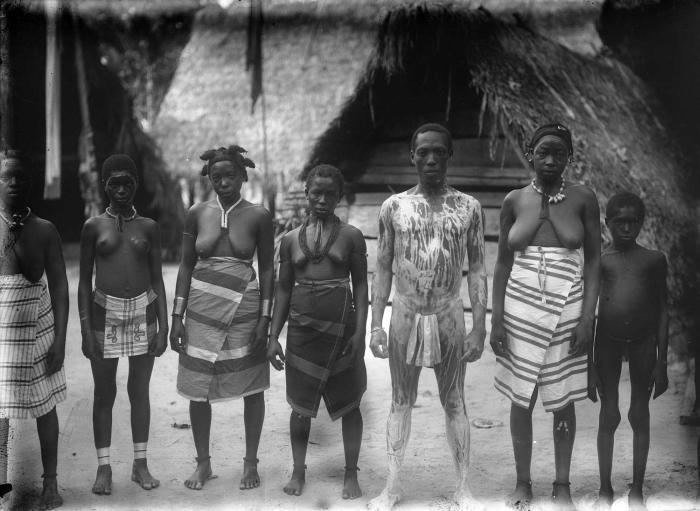 | ||
The Ndyuka people (pejoratively spelled 'Djuka') or Aukan people or Okanisi sama, are one of six Maroon peoples (formerly called "Bush Negroes", which also has pejorative tinges) in the Republic of Suriname and one of the Maroon peoples in French Guiana. The Aukan or Ndyuka speak the Ndyuka language. They are subdivided into the Opu, who live upstream of the Tapanahony River of southeastern Suriname, and the Bilo, who live downstream of that river.
They further subdivide themselves into twelve matrilinear kinship groups called lo. The lo of the Gaanmang is the thirteenth lo.
The Ndyuka and related people are of African descent, having been shipped as slaves to Suriname in the 17-18th century to work on Dutch-owned colonial plantations. Those who escaped fled deep into the rainforests where they established Maroon communities along rivers in mostly southeastern Suriname and parts of neighboring French Guiana and where their culture adopted elements of Native American cultures. It is rare for Ndyuka people to marry outside the group, "so they remain genetically close to their African ancestors."
TheMilwaukee Public Museum says the following about the Ndyuka and their way of Maroon life:
Among the Ndyuka, as in all other Maroon tribes, everyone works on artistic projects in everyday activities, and are admired for their excellent skill in woodcarving, calabash carving, and textile arts. Social relationships and tokens of love and affection are the central reason for the production of art. Historically, only men practiced woodcarving, while women did calabash carving and textile arts. Because objects were created as gifts men have large collections of clothes, capes, and breech clothes from wives and past lovers, while women own large collections of wooden objects like food stirrers, stools, trays, and peanut grinding plates. Calabash carving, also prevalent but done mostly by women, produces spoons and dishes with intricate designs for everyday use. Women’s textile arts, produced as exchange gifts for a husband or lover, have transformed greatly as access to trade cotton from the coast has increased. Trends in fashion change quickly, utilizing elaborate embroidery, appliqué, and patchwork, with women freely borrowing from others while making it their own.
On 10 October 1760, the Ndyuka signed a treaty with the Dutch colonizers, who allowed them territorial autonomy. The 10th of October is still a day celebrated among some Surinamese Maroons.
In the last decades of the 20th century a large number of the Ndyuka people began moving from their ancestral villages to the coast, especially in and around Paramaribo, the country's capital. Their motivations for moving were mainly economic.
